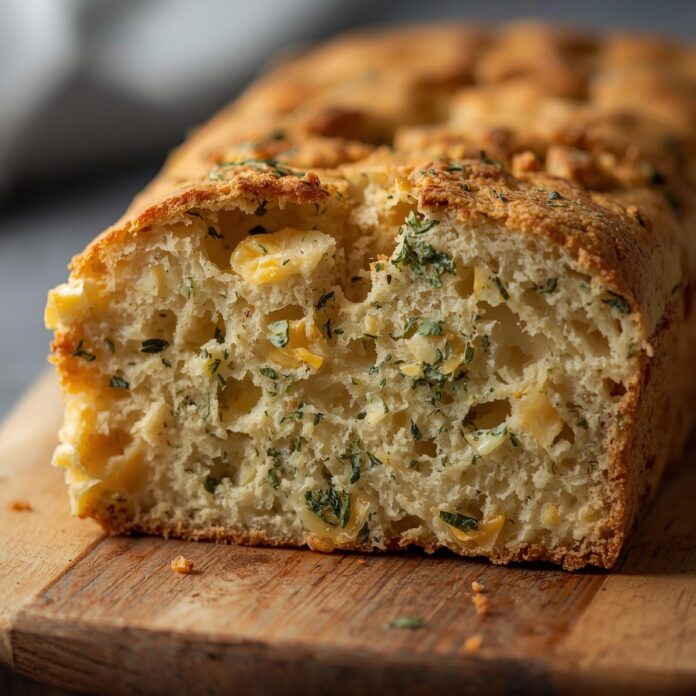There is a particular kind of magic that surrounds the idea of baking cookies, a magic woven from memory, ritual, anticipation, and the simple sensory joy that accompanies the act of turning butter, sugar, and flour into something warm and fragrant. Among the endless variations of the timeless cookie, Cherry Chocolate Chip Cookies hold a uniquely captivating charm. They combine the familiar comfort of the classic chocolate chip cookie with the bright, sweet-tart lift of cherries, creating a harmony that feels both nostalgic and refreshingly new. This recipe is built upon that harmony, celebrating the moment when rich chocolate meets juicy cherry and transforms an ordinary afternoon into something memorable. Before we reach the recipe itself, it’s worth exploring the deeper appeal of these cookies, tracing the traits that make them more than just a simple dessert.

At its core, a Cherry Chocolate Chip Cookie is a study in contrast, a small but vivid example of how two flavors that might seem at odds can come together to produce something far greater than the sum of their parts. Chocolate, especially when incorporated as chips or chunks, carries a deep, rich decadence that lends heaviness and warmth. Cherries, depending on the form they take, offer brightness, moisture, and a natural fruit tang that cuts cleanly through the cocoa’s richness. When folded together inside a dough that’s buttery, slightly caramelized, and soft at its center, each bite becomes an interplay of lushness and lightness. It is a cookie that balances indulgence with vibrancy, making it equally fitting for winter holidays and summer gatherings.
The roots of this cookie lie in two parallel traditions. On one side is the venerable chocolate chip cookie, an invention that has reached near-mythic status in the realm of American baking. Its creation story is well known: a happy accident involving a bag of chocolate pieces and a baker’s intuitive leap of faith. On the other side is the long-standing use of cherries in baking, a tradition far older and geographically broader. Cherries have been folded into pastries, breads, tarts, and confections across centuries and cuisines. Bringing cherries into a chocolate chip cookie could have been inevitable, given how well they complement one another in cakes, bars, and sweets. Yet despite this destiny, a Cherry Chocolate Chip Cookie still feels like a delightful discovery each time it’s baked.
What elevates these cookies beyond novelty is the emotional resonance they often carry. For many, cherries evoke strong memories: the taste of summer fruit markets, the ritual of pitting fresh cherries under a sunny kitchen window, or the delight of a childhood treat studded with bright red maraschinos. Chocolate, too, carries its own emotional associations—celebrations, comfort, warmth, and the universal pleasure it brings across ages. When those two ingredients are united in a cookie, they become a vessel for memory, celebration, and sensory satisfaction.
The texture is another key dimension of their appeal. One of the most debated topics in the world of cookie enthusiasts is texture: crisp edges or soft centers? Chewy or cakey? Dense or airy? The beauty of Cherry Chocolate Chip Cookies is that cherries introduce a naturally moist element that ensures tenderness, even when the edges are crisp. The chocolate provides pockets of melty richness, while the dough supports both textures without allowing one to overshadow the other. With the right balance of ingredients and technique, these cookies achieve that sought-after contrast between a golden, lightly crisped exterior and a soft, chewy interior. They are the kind of cookies that remain pleasurable even hours or days after baking, as the cherry flavor slowly deepens throughout the dough.
Choosing the right type of cherry creates opportunities for personalization. Dried cherries offer intense flavor and a pleasant chewiness; fresh cherries bring juiciness and a burst of natural sweetness; frozen cherries provide convenience and consistent flavor; maraschino cherries offer nostalgic color and a distinctly sweet profile. Each choice yields a slightly different version of the cookie, making the recipe adaptable to different seasons, preferences, or occasions. A baker seeking a cozy, winter-appropriate cookie might opt for dried or maraschino cherries paired with dark chocolate. Someone looking for a more summery expression might fold in fresh cherries and milk chocolate. This versatility is one of the qualities that has helped the Cherry Chocolate Chip Cookie quietly become a favorite for many bakers who enjoy experimentation.
Chocolate, too, offers countless variations that allow for customization. Semi-sweet chips create a familiar, balanced taste. Dark chocolate chunks introduce deeper cocoa notes that elevate the cookie into something more sophisticated. Milk chocolate lends extra sweetness and softness. White chocolate can bring a creamy counterpoint that complements the cherry’s tang especially well. Beyond these standard options are flavored chocolates such as ruby chocolate or caramelized white chocolate, each bringing a different level of indulgence. As with cherries, the baker’s choice determines the personality of the cookie. Whether the goal is comfort, elegance, nostalgia, or novelty, pairing the right chocolate with the right type of cherry ensures a cookie that fits the moment perfectly.
But the importance of a Cherry Chocolate Chip Cookie cannot be reduced simply to flavor and texture. Baking these cookies carries with it an element of ritual and craft. Measuring flour, sifting dry ingredients, softening butter, and mixing components to the perfect consistency—each step demands attention, rhythm, and a bit of patience. The act of folding cherries and chocolate into the dough invites a moment of tactile engagement, where the baker becomes connected to the ingredients and to the simple pleasure of making something with intention. Scooping the dough onto trays, spacing each portion with care, becomes an invitation to anticipation. And when the cookies finally go into the oven, the scent that fills the kitchen is more than the aroma of sugar and fruit and chocolate—it’s the promise of warmth shared with others.
Cookies, perhaps more than any other baked good, are inherently communal. They are meant to be offered, passed around, packed into lunch boxes, brought to gatherings, or gifted to neighbors. A Cherry Chocolate Chip Cookie, with its bursts of color and flavor, carries a particular joy when shared. It feels festive without needing to be tied to a specific holiday. It has enough novelty to surprise guests, yet enough familiarity to comfort even the pickiest eater. This quality makes it an excellent recipe for both experienced bakers and novices. Those new to baking often find that adding cherries transforms the experience into something special, giving them confidence through the splash of color and flavor. Experienced bakers appreciate how small variations—different chocolates, mix-ins, baking times—can transform the cookie’s personality.
The recipe itself has evolved through countless kitchens. Some versions are dense and indulgent; others are light and buttery. Some rely on browned butter for depth, while others use almond extract to amplify the cherry notes. Some versions are crisp and golden, others are thick and chewy. What unites all these variations is the fundamental idea that cherries and chocolate belong together, especially in a cookie dough that supports and enhances their natural qualities. The recipe we will explore draws inspiration from these many traditions while striking a careful balance between ease and refinement, familiarity and creativity.
Introduction
Before approaching the actual step-by-step instructions of the Cherry Chocolate Chip Cookies recipe, it is useful to deepen our understanding of the techniques, choices, and kitchen principles that will guide the baking process. A truly reliable recipe does not rely solely on its list of ingredients but also on the baker’s awareness of why each step matters and how certain variables influence the outcome. This foundational knowledge acts as the scaffolding that holds the instructions together, and it transforms the recipe from a simple list of actions into a more deliberate, predictable craft.
One of the most overlooked aspects of successful cookie baking is the role of ingredient preparation. Many people view the recipe instructions as beginning the moment they start mixing, but in reality, the process begins much earlier—when ingredients are chosen, portioned, tempered, and prepared. Butter, for example, must often be softened to a very specific stage. Too cold, and it resists creaming; too warm, and it fails to hold enough air or structure. This distinction may seem small, but it has a noticeable effect on the final texture of the cookies. A softened butter that yields gently to pressure but still holds its shape guarantees proper aeration during creaming and contributes to a balanced spread during baking. In the upcoming instructions, paying attention to butter temperature will be one of the keys to achieving consistent, professional-quality results.
Likewise, the preparation of cherries influences the entire character of the cookie. Fresh cherries require pitting, cutting, and sometimes blotting to remove excess moisture. Dried cherries may need rehydration for a softer texture, depending on the desired outcome. Maraschino cherries must be drained well to avoid introducing too much liquid into the dough, and the juice also tends to tint the dough if not handled deliberately. The instructions that follow in the recipe will address each of these possibilities with clarity, but understanding the reasoning behind them enriches the baking process. Excess moisture can cause cookies to spread too far or bake unevenly, while properly prepared cherries integrate seamlessly into the dough, contributing flavor without compromising structure.
Another critical area of focus is the mixing sequence. Many bakers unintentionally undermine their results by overmixing or undermixing at various stages. For cookies, especially those intended to be soft and chewy with a delicate crumb, the order of operations plays an essential role. Creaming butter and sugar together is not simply about combining them; it is a controlled process that introduces air into the dough. This aeration creates lift and contributes to the cookie’s final texture. However, once the flour is added, mixing must become more restrained. Overworking flour develops gluten, which can transform a tender cookie into something bread-like or tough. The instructions later will emphasize when vigorous mixing is appropriate and when gentleness becomes necessary.
Then there is the matter of temperature and timing—two elements that distinguish consistent cookies from unpredictable ones. Chilling the dough, for instance, is not a universal requirement for cookies, but it is a particularly useful step in recipes that include moist mix-ins like cherries. chilling firms the fats within the dough, helping the cookies maintain height and shape during baking. It also encourages flavors to meld, allowing cherries and chocolate to distribute more evenly. While some bakers prefer to skip chilling for convenience, the resulting cookies often spread too much or bake unevenly. The detailed instructions will explain how to chill the dough properly, how long to chill it for depending on the type of cherries used, and how to adjust baking temperature or tray preparation to accommodate that choice.
Oven behavior must also be considered. Not all ovens maintain temperature evenly, and many home ovens have hot spots that cause certain areas of a baking sheet to brown faster than others. This can lead to inconsistent batches, especially with cookies containing fruit. The introduction to the detailed instructions will therefore include guidance on rotating baking sheets, testing oven accuracy, and preparing trays with parchment or silicone lining. These may seem like small details, but in baking, consistency is built from attention to such details long before the dough even reaches the oven.
A frequently underestimated component of cookie baking is ingredient measurement. Instructions later in the recipe will specify weights where appropriate, because weighing ingredients offers dramatically better accuracy than using volume-based measurements. Flour, in particular, can vary in density depending on how it is scooped. Too much flour produces dry or cakey cookies; too little yields cookies that spread excessively and lose their intended structure. Understanding these measurement principles before reading the main instructions helps ensure that the steps later will make clearer sense and yield more predictable results.
Equally important is the role of leavening agents. Many cookie recipes rely on baking soda, baking powder, or a combination of the two. Each plays a specific role based on the acidity and moisture of the dough. Cherries, depending on their type, can alter the acidity level of the dough, which in turn affects how baking soda performs. The instructions that follow will explain how the recipe accommodates these acidic contributions and how the leavening must be balanced to avoid overly flat or overly puffy cookies.
Another foundational concept is the relationship between dough temperature and chocolate distribution. When dough is too warm, chocolate chips or chunks can melt during mixing or pressing, leading to streaking or uneven placement. When dough is too cold, chips may not incorporate evenly, causing some cookies to have large chocolate pockets while others have very few. The upcoming instructions will guide you toward a mixing temperature that ensures even distribution without melting, and techniques for adjusting the dough if it cools or warms more quickly than expected.
Cooling procedures after baking are also an important consideration. Instructions will outline the difference between cooling cookies on a tray versus transferring them early to a wire rack. Cookies continue to cook from residual heat even after being removed from the oven, and understanding this helps achieve the ideal final texture. Allowing Cherry Chocolate Chip Cookies to cool partially on the tray lets the edges firm up while the centers settle. Moving them too early can cause breakage; moving them too late can cause overbaking. The introduction to these concepts helps prepare the baker for the detailed steps to come.
Finally, it is essential to consider storage, because cherries influence the way cookies retain moisture. Cookies with fruit tend to remain softer over time, but they can also risk becoming overly moist if stored improperly. Later instructions will describe how to keep the cookies fresh, how to layer them for storage, how to freeze the dough or the finished cookies, and how to maintain their intended texture even after several days.
Cherry Chocolate Chip Cookies
There is a particular kind of magic that surrounds the idea of baking cookies, a magic woven from memory, ritual, anticipation, and the simple sensory joy that accompanies the act of turning butter, sugar, and flour into something warm and fragrant. Among the endless variations of the timeless cookie, Cherry Chocolate Chip Cookies hold a uniquely captivating charm. They combine the familiar comfort of the classic chocolate chip cookie with the bright, sweet-tart lift of cherries, creating a harmony that feels both nostalgic and refreshingly new. This recipe is built upon that harmony, celebrating the moment when rich chocolate meets juicy cherry and transforms an ordinary afternoon into something memorable. Before we reach the recipe itself, it’s worth exploring the deeper appeal of these cookies, tracing the traits that make them more than just a simple dessert.
Ingredients
- Dry:
- 2 ¼ cups all-purpose flour
- 1 teaspoon baking soda
- ½ teaspoon baking powder
- ½ teaspoon salt
- Wet:
- 1 cup (2 sticks) unsalted butter, softened
- 1 cup packed brown sugar
- ½ cup granulated sugar
- 2 large eggs
- 2 teaspoons vanilla extract
- Mix-ins:
- 1 ½ cups semisweet chocolate chips (or chopped dark chocolate)
- 1 cup chopped maraschino cherries patted completely dry
- OR 1 cup dried cherries (for less moisture & more chew)
Instructions
- Preheat oven Preheat your oven to 350°F (175°C). Line baking sheets with parchment paper.
- Mix dry ingredients In a bowl, whisk together flour, baking soda, baking powder, and salt. Set aside.
- Cream butter & sugars In a large mixing bowl, cream the softened butter with the brown sugar and granulated sugar until light and fluffy (2–3 minutes).
- Add eggs & vanilla Beat in the eggs one at a time, then add the vanilla extract.
- Combine wet & dry Add the dry mixture to the wet mixture and mix just until combined—avoid overmixing.
- Fold in chocolate & cherries Stir in chocolate chips and cherries. If using maraschino cherries, make sure they are very dry to prevent spreading.
- Scoop the dough Drop rounded tablespoons (or use a cookie scoop) onto the prepared baking sheets, leaving about 2 inches between cookies.
- Bake Bake for 10–12 minutes, or until edges are lightly golden. Centers may look slightly soft—this is perfect.
- Cool Let cookies cool on the baking sheet for 5 minutes, then transfer to a wire rack.
Notes
- Cherries: Maraschino cherries make a sweeter, softer cookie but must be dried well. Dried cherries give a richer, more intense cherry flavor and better structure.
- Chocolate pairing: Dark chocolate pairs especially well with cherry, but milk or semisweet works too.
- Optional additions: ½ teaspoon almond extract for a cherry-almond twist ½ cup chopped almonds or pecans Sprinkle flaky sea salt on top after baking



